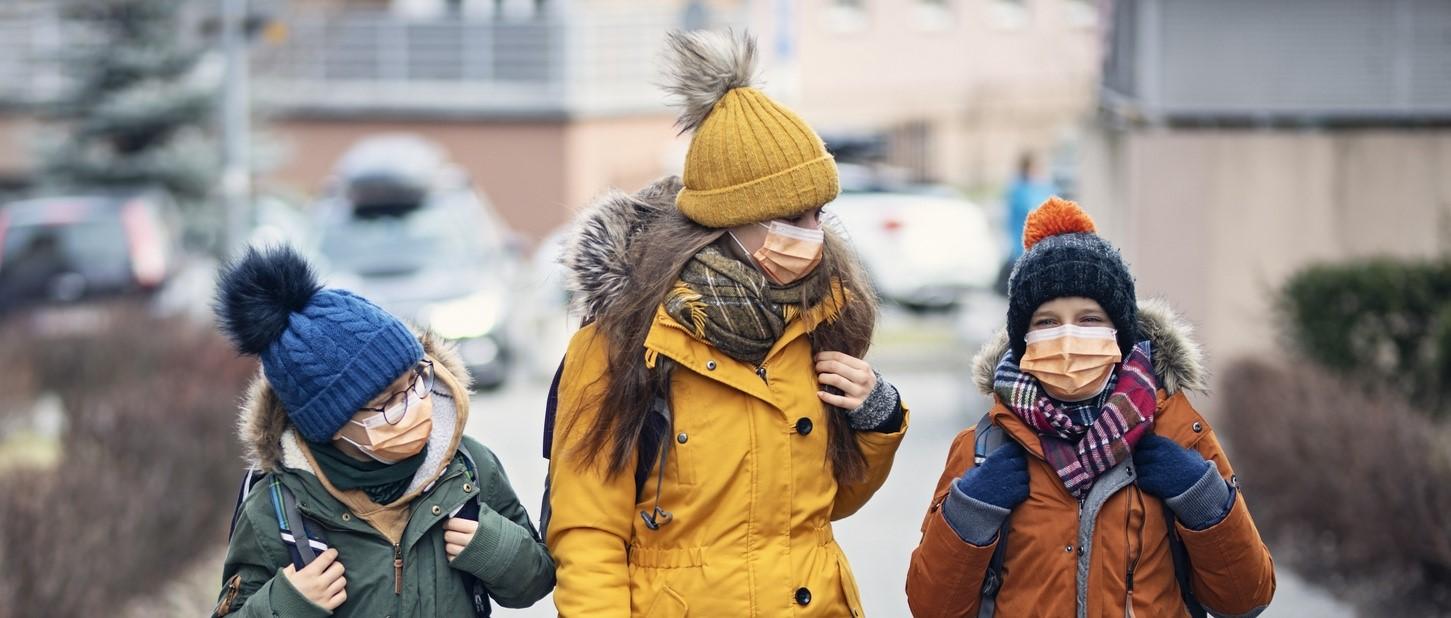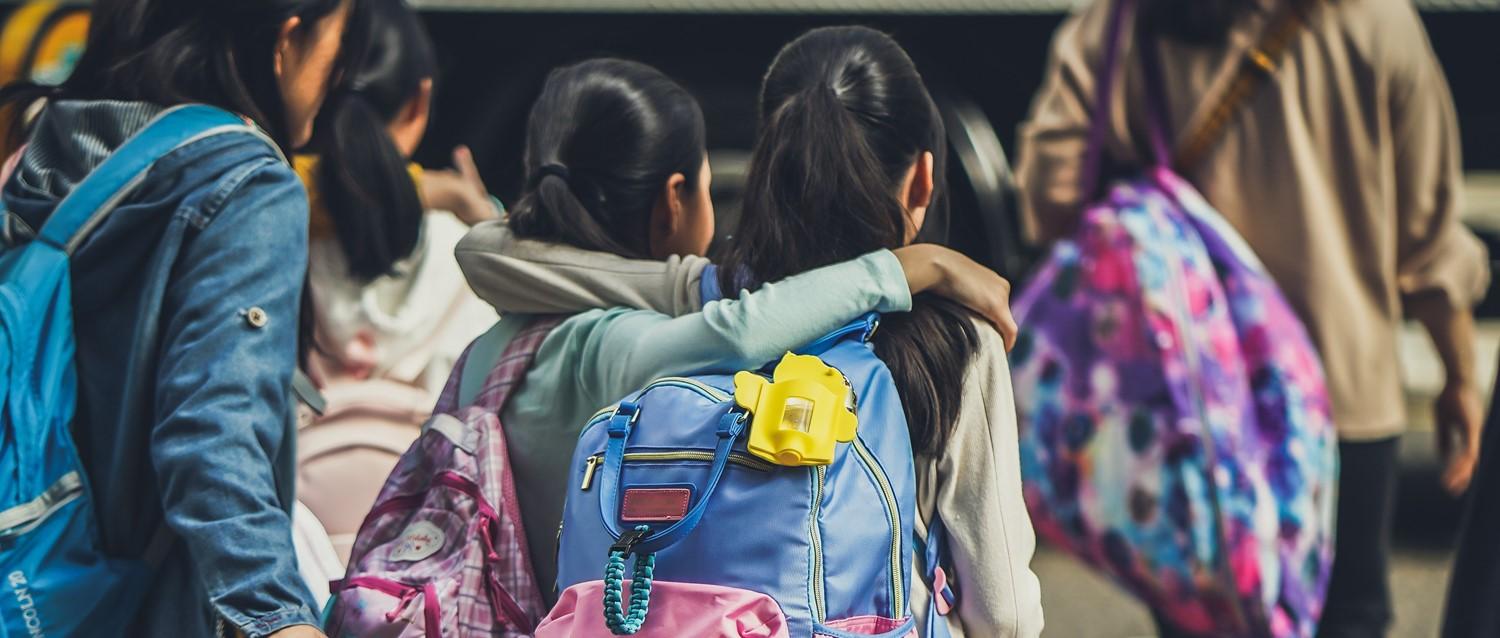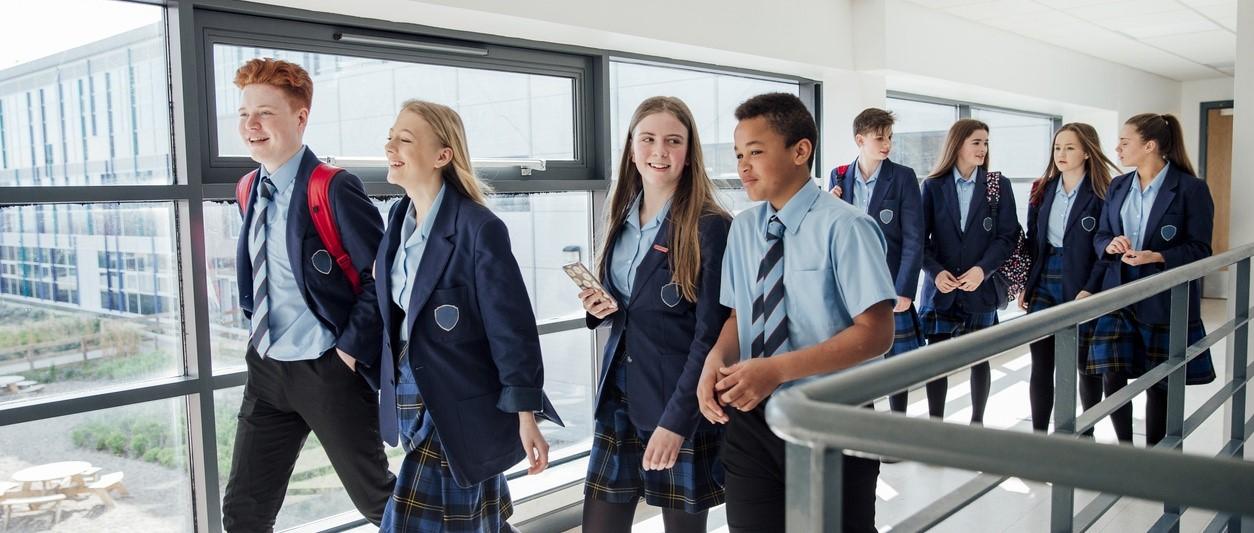
COVID-19: how to manage back-to-school worries
Peer reviewed by Dr Sarah Jarvis MBE, FRCGPLast updated by Gillian HarveyLast updated 5 Mar 2021
Meets Patient’s editorial guidelines
- DownloadDownload
- Share
- Language
- Discussion
From 8th March, pupils across England will be heading back to school. But with the pandemic still affecting our daily lives, many children have found their familiar school has undergone significant change, both in terms of rules, structure and environment.
In this article:
Going into a new school term can be nerve-racking enough. But for pupils who have been taught remotely over the last few months, the prospect of heading back to the classroom may feel overwhelming. As parents, it's important to equip our children with the tools they need to feel confident at school - and this year, that includes helping them to adapt to a new situation and prepare for change.
Continue reading below
How is the guidance for schools changing from 8th March?
In Scotland, early learning and children in primary years 1-3 returned on 22nd February. From 15th March, all remaining primary school children will return full-time and secondary school children part-time, with students in S4 to S6 who are studying for national qualifications being prioritised for face-to-face learning.
In Wales, children aged 3-7 started a phased return on 22nd February, with plans for children in years 7, 8 and 9 to return for 'check-in' sessions from 15th March. In addition, some children in years 10-12 may have some flexibility to return.
In Northern Ireland, children in primary 1 to primary 3 (aged 4 to 7) will go back to school on 8th March. However, from 22nd March they will return to remote learning and children in years 12-14 will return to school.
In England, all pupils in England are able to return to school from 8th March. However, secondary schools are being given flexibility to stagger the return of secondary school students to allow initial COVID-19 testing with lateral flow devices (LFDs) to take place.
Under the January lockdown guidance, only pupils who needed to be in school for essential reasons (for example, their parents or carers are key workers) received in-person teaching, with other children being taught remotely.
To ensure that schools are safe for a full return of pupils and staff, further measures are coming into force, especially in secondary schools. These include:
The use of face coverings in classrooms and when inside school buildings for secondary school pupils and staff.
Regular rapid COVID-19 testing using LFDs available to all secondary pupils.
To support a safe return to school, secondary school staff and pupils will be offered asymptomatic testing using LFDs. Pupils will have three tests at school to begin with, spaced 3-5 days apart. After those, pupils and staff will be provided with home testing kits for regular testing. The tests will be voluntary but strongly encouraged, according to the government guidance for schools.
Those with symptoms or a positive test, as previously, should self-isolate and not attend school. Anyone with symptoms or otherwise instructed to get a test can book through the free online service.
The school environment
As adults, it will have taken a while to adjust to the new normal. But for children attending a once familiar school, certain changes may feel difficult to manage. Just as with some of the measures introduced in schools in September, preparing your child for significant differences in their school routine is a good way of helping them to feel more in control.
"The children need to be prepared for a different routine," agrees headteacher Emma Meadus, of Coppice Valley Primary School in Harrogate. "For example, we won't be gathering together for whole school assemblies, and they won't be going to the hall to have lunch with several classes."
Instead Coppice Valley school - like many - has made provision for pupils to eat in their classrooms, and participate in virtual assemblies rather than coming together en masse.
To help children prepare more comprehensively for the idea of change, Dr Sharie Coombes, child psychologist, recommends encouraging them to reflect on other times when they've had to overcome change and how they coped. "Add a bit of deliberate reflection on the challenge - it will be interesting to see what we can learn about ourselves and each other and how we adapt to change during this time," she suggests.
Continue reading below
Discuss the facts
Your child will have heard about coronavirus from many different sources. Ensuring that they understand the facts, and the situation at the present time, is a way of protecting them whilst ensuring preparedness. "Give them the basic facts without any sensational aspects or 'what ifs'," advises Coombes. "Answer questions honestly and in a matter-of-fact way."
It is likely that others, either deliberately or innocently, may add an element of rumour and conjecture during conversations at school. You can prepare children for this before it happens by explaining that some people may misunderstand the situation, and encourage them to raise any worries with you as they arise. This will help them avoid becoming alarmed if rumours circulate!
Expecting disruption
While it's important not to overburden children with all the different scenarios that may occur, it's possible that there will still be disruption to learning over the coming months, whether due to government restrictions, outbreaks of the virus at school or staff absences. As guidance changes, schools may elect to adapt existing plans. Or if a pupil becomes unwell, children may have to spend a period of time working remotely.
Sudden change can be difficult to deal with, so it's important that children are aware of likely disruptions and understand that both parents and schools have contingency plans in place. "It's important to talk to them about all the situations they may need to deal with," agrees Meadus. "As a school, we're going to talk about plans, including what might happen if they need to work remotely."
Continue reading below
Offer reassurance
At the same time, it's important to take into account the age of your child and their current level of knowledge of coronavirus before deciding how and what to share with them. While it's not a good idea to leave children in the dark about plans, it's also important not to overwhelm or frighten them. "We have to help the children to understand COVID," agrees Laura Osei, Headteacher of The Eden School, London, "but any conversations should take the stage of the child into account."
Coombes recommends we reassure children that although things may change, adults are still monitoring the situation to keep them safe. "Let them know that things will change as we go along but the adults are keeping a careful eye on the situation and will work together to do whatever is needed," she advises.
Stay personally informed
In order to tackle potentially difficult situations and field any tricky questions, it's important as parents that we familiarise ourselves with the policies at our child's school. Most schools will communicate key plans with parents, but if you have any questions there is likely to be further information available to those who ask.
"We've sent set information out to parents," explains Meadus, "but we haven't shared the entire risk assessment, as for some parents this may feel overwhelming. But the information is available on our website for those who want or need it."
It's also a good idea to have a plan in place for situations that may arise in family life - for example, if you or your child develop symptoms, or if your child's class is subject to a period of remote working. While we can't plan for every possible scenario, introducing certainty where possible will make a real difference to your child's sense of well-being.
Patient picks for Pandemic articles

COVID-19
COVID-19: is it safe to send your kids back to school?
The UK Government has scrapped its plan to get all children back to primary schools in England before the summer holidays. But as more parents return to work over the coming weeks as some shops and businesses open up, they are left with a difficult decision - is it safe for children to go back to school? We look at the science behind the headlines.
by Gillian Harvey

COVID-19
What are the school COVID rules October 2023?
As we enter the winter months, your child may be showing symptoms that make you wonder whether they can go to school. We explain the UK government's latest guidance on school COVID rules October 2023.
by Amberley Davis
Continue reading below
Article history
The information on this page is peer reviewed by qualified clinicians.
5 Mar 2021 | Latest version

Ask, share, connect.
Browse discussions, ask questions, and share experiences across hundreds of health topics.

Feeling unwell?
Assess your symptoms online for free